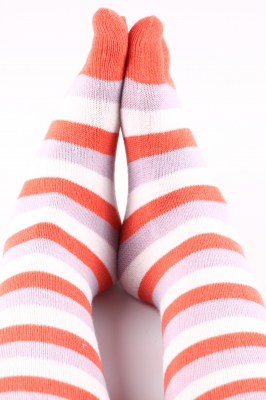They say that sitting on your bum for a journey anywhere from four hours has the potential for causing a DVT.
What the heck is a DVT?
It stands for Deep Vein Thrombosis and in a nutshell it is a blood clot formed in a deep leg vein. Those big ones pumping through our calf and thigh muscles.
BUT the good news is studies show that the risk is small of getting a DVT when travelling (about 1 per 4600 flights lasting longer than 4 hours). However, sitting for long lengths of time in a plane, bus, train or even a car ride, being immobile and cramped, means our blood flow slows down and can collect in the legs when they are hanging down and form a clot.
(Clearly flying in a lie-flat Business Class seat is the safest way to travel. But I digress…)
Who’s most at risk of getting a DVT?
- Those who have had an operation within 2 months
- Pregnant women
- Had a DVT before and not taking anti-coagulants
- Those with a history of DVTs in the family
- Obesity
- A broken leg in plaster
- Recent severe illness like a heart attack or pneumonia
So the good news is most of us are not at risk of getting a DVT when flying long haul!
How can you avoid a DVT?
- Exercise your calves and feet regularly. You can do this in your seat just by bending and straightening your legs and rotating your ankles
- Press the balls of your feet down hard on the floor to increase blood flow and repeat. Often
- Walk up and down the aisle a couple of times during the flight. (When I flew on the double-story A380 I ran up and down the back stairs on my own personal exercise equipment!)
- Drink plenty of water to keep hydrated
- Avoid alcohol and sleeping tablets (do as I say, not as I do!)
Do flight socks help prevent a DVT?
While you might not be at risk of a DVT, it is quite common to get foot and ankle swelling on a flight. Compression socks aid against this by providing graduated pressure support from the foot, ankle and tapering gently to under the knee.
If you are in the high risk DVT category, you should wear compression socks fitted by your doctor as they are designed to stop blood pooling. If you are like most of us and want to avoid swelling and the aching that comes with that, you can buy flight socks from your local pharmacy or from my Travel Store and I will ship them to you (NZ wide only, sorry).
What are the symptoms of a DVT?
When you get off the flight you should walk about to get the blood flowing again which is all most of us need. Swollen and puffy feet and ankles are normal and not a sign of a DVT. But if you get a swollen calf or have trouble breathing then get ye straight to the doctor.


